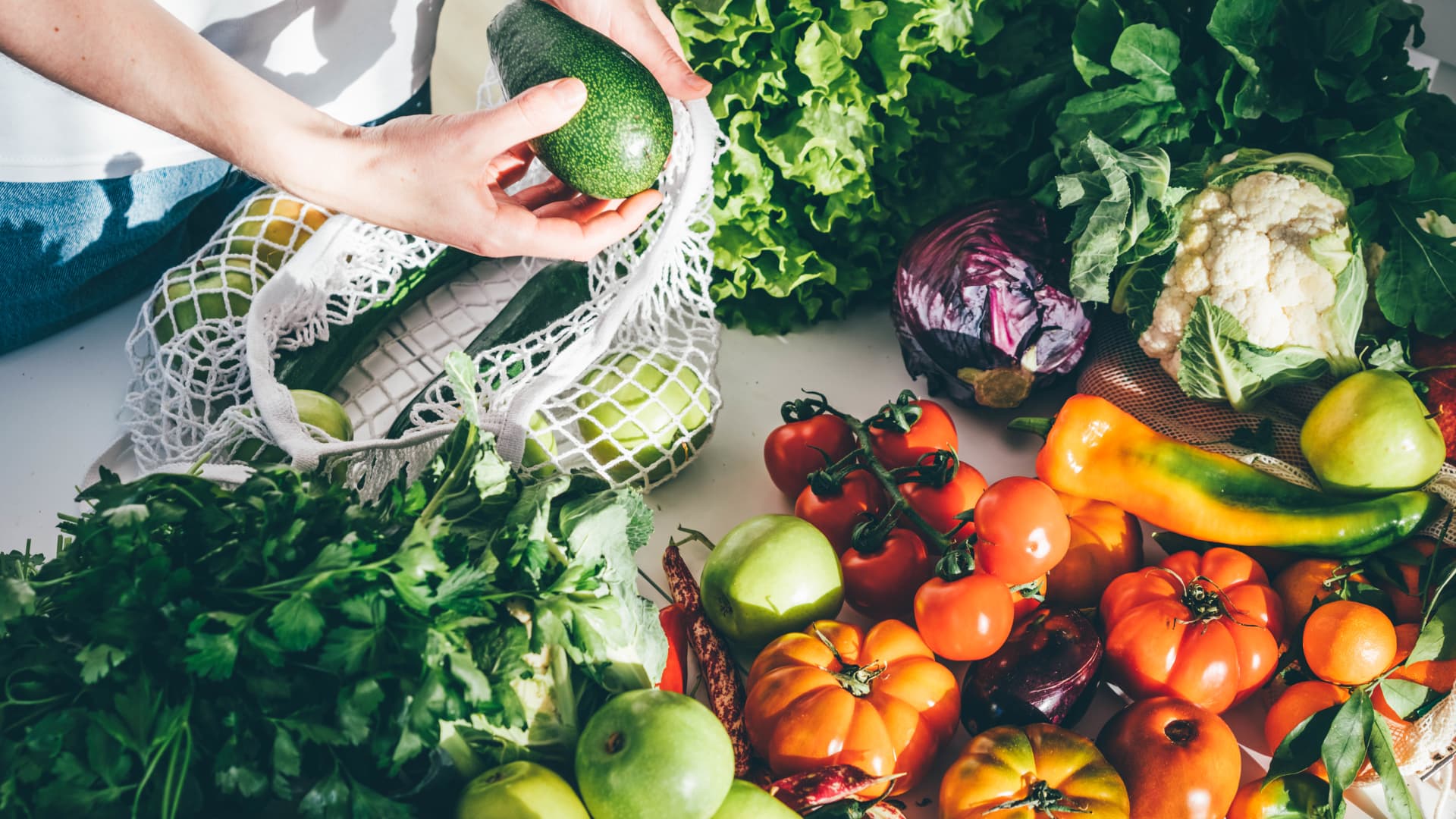Maria Korneeva | Moment | Getty Images
Eating a healthier — or at least a more balanced diet — is not always as easy as it sounds, with food prices leading to large disparities between rich and poor communities in many countries.
One piece of British research in 2023, the Broken Plate report by The Food Foundation released in June, found that healthy food is usually twice as expensive as less healthy food, on a per calorie basis.
Campaigners say high prices have reduced many households’ ability to buy healthy or healthier food, pushing consumers toward less healthy, ultra-processed options.
With this cost divide, it’s worth focusing on nutrient-rich fresh fruit and vegetables, in particular — which are key to any balanced diet.
Fruit and vegetables
Countries in the developed world are increasingly dependent on international imports as more consumers demand year-round access to tropical or out of season fruit and vegetables. This has led to a longer and more complicated global supply chain.
The U.S. is one of the biggest importers of fresh fruit and vegetables in the world, and it’s a big exporter too. But while U.S. production by volume has remained stable over the years, its imports have increased by 129% for fruit, and by 155% for vegetables, in the last 20 years.
According to a recent study by the U.K.’s University of Warwick, fixed costs in the supply chain alone have led to American consumers paying 40% more for fruit and vegetables over a 10-year period.
“The data very clearly says, there is this fixed high cost for fresh fruit and vegetable, which is not there for other products,” Thijs Van Rens, one of the authors of the Warwick study told CNBC. “This market is inefficient in setting the right prices.”
In contrast, Van Rens argued, ultra-processed food items — which aren’t perishable like fresh produce — are becoming cheaper. “Junk food is cheap because you can keep it forever. You can buy it in bulk, you can produce it in bulk, you can deliver it when it’s cheap to deliver it,” he said.
“There is a very tight link between the price of food and how healthy it is for you.”
Indeed, the amount of vegetables bought by British families has fallen to its lowest level in 50 years, the Food Foundation study found.
Rebecca Tobi, a senior business and investor manager at The Food Foundation, said there is a big gap in policy in terms of how lawmakers are making it easier for people to access healthier foods. “Choice is severely constrained when it comes to what people can buy,” she told CNBC.
Labor shortages
The agricultural workforce is in decline in most countries around the world, especially in Europe and the U.S., according to International Labour Organization (ILO).
Farming and agriculture is no longer a desirable career route for many people with its unsociable and long hours, the physical intensity of the labor, which is often in remote, rural locations for little pay.
As the domestic work force shrinks and ages, developed nations traditionally rely on non-domestic and seasonal workers. Thus, any shortage of workers affects the stability of the food supply chain overall.
A survey by the U.K.’s National Farmers’ Union (NFU) found that fruit and vegetables worth £22 million ($28 million) were wasted in the first half of 2022 alone, directly because of workforce shortages.
The union said 38,000 seasonal worker visas were available in 2022 while the industry needed 70,000 workers.
The British government hopes automation could reduce the demand for migrant workers. Countries with aging populations like Japan already invest in autonomous farming technologies.
But automation means more investment in equipment for developers which could result in new price increases for the produce.
U.S. farms are affected from a similar scarcity of labor, demonstrated by a steep increase in the number of agricultural worker visas (H-2A) that American farmers have requested in the last 20 years.
Some 371,000 temporary agricultural work positions were certified in the U.S. in 2022, a sevenfold increase from 48,000 in 2005.
Unpredictable weather
Further complicating supply chains for fruit and vegetables is the weather. China, India, Brazil, Turkey, and Mexico are among the largest fruit exporters of the world. And every single one of these countries has suffered from extreme weather events over the last five years.
In 2023, Mexico saw such high temperatures that the government is now carrying out cloud seeding to artificially increase rain. China saw both devastating floods and extreme heat in the same season, wiping out its crops and disrupting the food supply.
A new analysis by Energy and Climate Intelligence Unit found that climate change, combined with the impact of energy costs, have increased household bills by an average of £605 ($770) in the U.K. Strikingly, climate costs accounted for 60% this increase alone, the study said.
